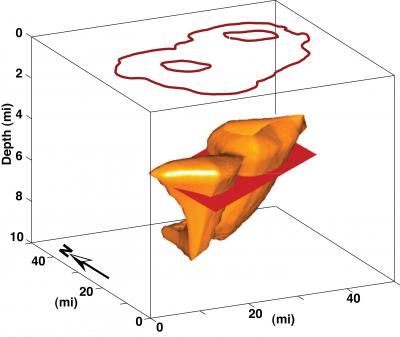Social Software Society for Safety.
Is there any scarcity? Perhaps friendship, because it requires time, shared history, and attention, is the ultimate scarcity—but must it always be the case?
A thoroughgoing naturalist, I stipulate that the value of all objects supervenes on their natural properties—rational evaluation of them is constrained by the facts. If I choose one car instead if its identical copy, simply because one has been stamped with a “brand,” this is the very definition of irrationality—if the 2 objects are exactly the same—you must be indifferent or violate the axioms of decision theory/identity theory. If I used a Replicator Ray to duplicate the Hope Diamond—which would you choose—the original—based on its history (was stolen, traveled around the world, etc) or the duplicate—they are identical!!
What happens to the value of the original? It is worth ½ because now there are 2? I make a 3rd copy so now it is worth 1/3? Nonsense—value has nothing to do with scarcity—a piece of feces may be totally unique in shape, just like a snowflake—but it has no value. Intrinsic value of objects depends on their properties. Instrumental value depends on what they can be used for (converted to intrinsic value).
Now I switch the 2 Hope Diamonds—neither of us knows which is which—do you pout and refuse to take it?
Now I duplicate your parents. I’m going to kill one set of them—which do you save? The originals. You owe them a duty simply because of the authenticity of the past relationship—the history you share with them. This is the difference between subjects and objects.
In an October 5, 2007 article, (WSJ, also summer feature in 07 New Atlantis), Christine Rosen argues that “because friendship depends on mutual revelations that are concealed from the rest of the world, it can flourish only within the bounds of privacy; the idea of public friendship is an oxymoron.”
What then, does the arrival of the transparent society bode for friendship? With ubiquitous computing—devices built into our clothes, embedded in the environment, cameras linked to our retinal displays, recording and streaming everything to our digital backup, our “life log,”—what of friendship? Social networking software will be integrated into all interactions—your face recognition software will pull up the profile of anyone you meet, instantly searching keywords for common interests, friends, past lovers, etc. Video testimonial files will pop up—don’t date this guy! You will get an accomplishment “rating” for different areas—career, hobbies, etc. Edited montages of your greatest hits and misses will populate the net—spin control, reputation management—prestige brokering will be the function of “banks” of the future. Myspace and Facebook are nothing compared to what will come.
Rosen argues that Facebook and Myspace dilute the word “friend.” With such a quantity of “friends” we diminish the intensity and quality of relationships. We already rank “real world” friends unconsciously—Myspace makes it explicit with a top friends list. Rosen is aware that the social network sites create a new type of accountability—records of IMs, personal news feeds, etc mean that you can never claim to be unavailable—you will get caught in your white lie.
But the true potential of the transparent society lies in what I call “ruthless objectivity.” I’ve begun practicing this myself as a form of cognitive behavior therapy—confronting yourself on tape/video forces you to see how you interact with the world—allowing you to overcome negativity, if you can take the heat.
Within a decade, “omniveillance” and life logging may be the rule. Acknowledge your failings and insecurities and they no longer have power—except of course if they are things you can’t change. Thus the technological transhumanist imperative to overcome limitations—what is disease, but just such an unfair limitation?
Here is the key point for those of us involved with the lifeboat foundation. We can design defense systems forever but at the end of the day, the best we can do is minimize accidental harm. You will never stop 100% of people determined to go on a rampage or commit acts of terrorism. You can see this already with gun control. You’ll never build a gun smart enough not to be shot in anger/unless you undermine the technology itself. You can’t wait for the gun to authenticate in the heat of battle—unless I suppose it were hooked up to instant face recognition software (we could postulate scenarios all day!) When events like Columbine or the Virginia Tech shootings happened I am always shocked—not that they occurred, but that we have as few rampages each year as we do!!
Most of our social institutions (our factory education system) are set up to create winners and losers, artificial scarcity that breeds resentment, failure, exclusion, marginalization, and anger. No wonder people react unreasonably to an unreasonable world, it is only reasonable (in a twisted way). People are actually more resilient than given credit for.
The Federalist papers, written during the debate over the formation of the institutions of the US government, famously argue for a system of checks and balances, so that ambition will counter ambition, greed counter greed. We could expect reasoned debate and participatory democracy from a government of angels, but we have a government of men so we must assume the worst and design things accordingly. Every man is not a Socrates.
This design approach won’t work in the 21st century. You can only get so far assuming we are sociopaths. We are about to reverse engineer the brain. The mystery of empathy—how Ghandi, Mother Teresa, or Jesus managed to care for the unwashed masses—this will become apparent. Anyone that wants to be more moral can work at it just like going to the gym. The science of empathy is no more mysterious than that of muscle building.
Empathy enhancements, along with constant cognitive therapy thanks to total omniveillance can make us a much more tolerant and humane—and therefore SAFER—society. Of course, people will have to rethink the idea of privacy. My prediction is that once cheap surveillance technology arrives, the only stable endpoint is total recording of everything mundane and sensational. Privacy has no intrinsic value—it only derives instrumental value from the fact that people are evil and will use information to hurt one another. Futurists often seem to miss the essential point that 1$ spent on lessening the chances that somebody is going to be alienated can make us a lot safer in aggregate than $1 million spent on an elaborate technical solution. Not that these approaches are mutually exclusive—I argue that the only real hope for humanity is to re-write our neurological source code.
Facebook is still rather crude—it will give way to the next generation. We control the use to which our technology is put—it does not control us unless we allow it to. When the Virginia Tech “massacre” occurred, April 16, 2007, I scoffed at the memorial groups that sprung up—like an emotional echo chamber—thousands of people, quite distant from the actual events (not direct friends/family members) created pages and testimonials.
Another symptom of our ADD society—only 4 days before Don Imus had been fired over his “nappy headed hoes” remark—if the timing had been a bit different his scandal would have been forgotten before it got started.
My initial reaction was wrong—if these people want to “grieve” this way, perhaps it was of some comfort to the survivors and victims. It certainly doesn’t hurt anyone.
The Net is radically democratic and empowering. It isn’t one to many broadcasting, but many to many. I don’t like Blogs—who cares about your mundane life—what you had for dinner at some restaurant. I don’t want to start a regular blog because if I got a following I’d have to keep cultivating them—you’re only as good as your last post.
And yet I’m guilty of the same narcissism, uploading myself on youtube now, logging my bodybuilding photos for all to see. At least I try to be interesting—my pictures and slideshows, if ridiculous, are more entertaining than 50% of the material out there. As expected, I am starting to attract a gay following on youtube—at least they appreciate the male physique. There is a difference between blogging your life and sharing an area you’ve devoted 13 years to and achieved something in—ultimately I think that comes through.
As for relationships, today there are considerable limits to our empathy and attention—the latest studies show 5 “close” friends as average. The superlative “best” friend admits of only one, regardless of how many BFFs you may say you have. Polyamory (multiple person marriage) doesn’t work well with our current cognitive architecture, and love triangles are socially unstable despite what geometry might say (but at 60% divorce rate, regular marriage ain’t doing a lot better).
A God or superintelligence might have the cognitive capacity to attend and respond to every aspect of your being—multiplied by 6 billion, and truly be everyone’s best friend. Until then, we’ll have to be content to use our new social software to relate not alienate. You never know who’s watching.
Joseph

